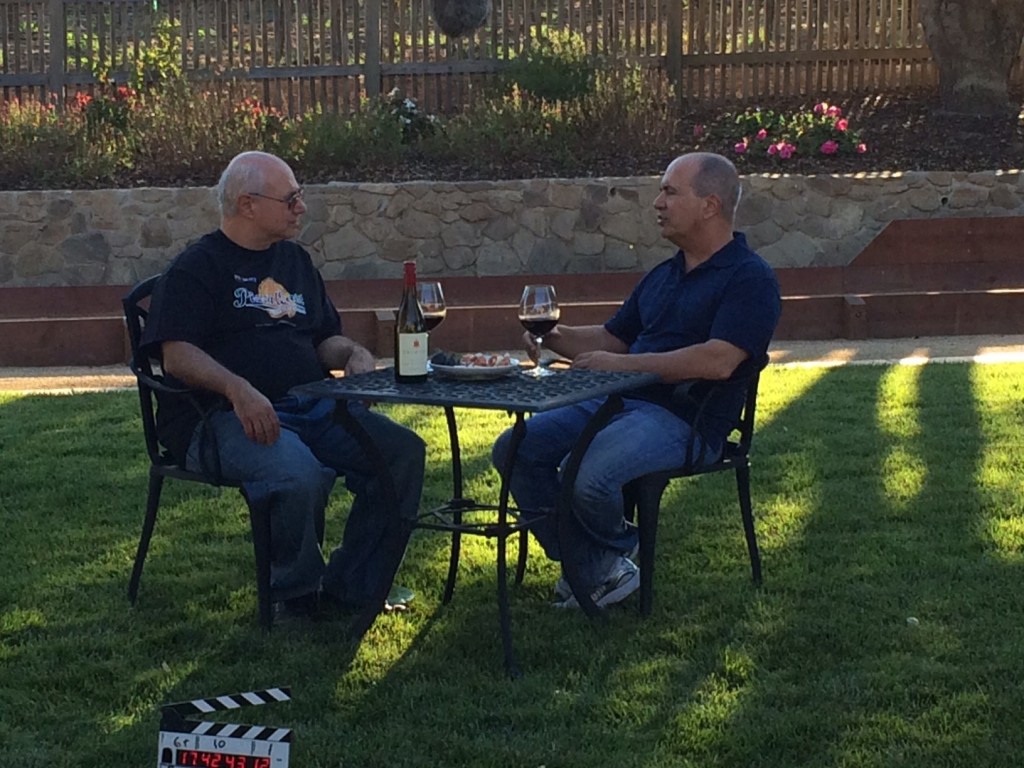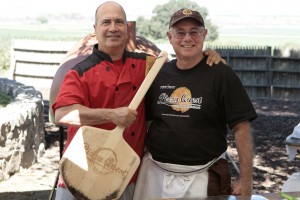John Arena Has Entered the Building
Note from Peter: I’m happy to announce that John Arena, founder of Metro Pizza in Las Vegas, and one of America’s most beloved pizzaiolos, is returning as a regular columnist here on PizzaQuest. His first official Guest Column will run in December. Many of you have read John’s informative and engaging posts during the past few years, in which he explores his interest in the history and artistry of pizza, as well as the business practicalities. His guest column on Chris Bianco, Anthony Mangieri, and Jonathan Goldsmith as examples of what it means to be a true pizza artist, is still one of my favorite posts in our short history.
In anticipation of John’s new series of Guest Columns, I asked him some questions about his career, heroes, and thoughts about the future of pizza. Here is the letter he wrote back, just before flying off to Italy for another round in his never ending pizza quest. In other words, lots of “research and eating.” His words below are a perfect kickoff and preview of what’s to come over the next months. Enjoy, and check back in the future for more from John.

- Peter and John Arena, discussing their favorite subject, pizza, at the Forno Bravo Expo, September, 2015
In my family our tradition was that you became a pizza maker at 13 years old. Before that I was allowed to help with prep and clean the pizzeria. The day after my 13th birthday I made my first pizza commercially so I’ve been at it for 48 years. I started as a strictly New York style pizza maker but over time it became obvious to me that the path to understanding why pizza is revered by so many people leads to embracing the diverse expressions of the craft. I guess you could say I’ve evolved from a specialist to a general practitioner.
My cousin Sam and I started our business in Las Vegas in 1980. Today we have 7 locations, 2 of which are strictly slice houses operated by large international food service companies at the university and the airport. We also have a bread and breakfast concept that is a labor of love and an homage to my Dad’s early days as a bread baker in New York’s Little Italy.
At this point in my journey I wouldn’t say I’m drawn to any particular style, because I’ve seen great and let’s just say not so great examples of every pizza variation.
In general I am most intrigued by pizzerias that are an expression of the pizza maker/founder. The most depressing thing to me is to walk into a pizzeria and meet an owner who’s not covered in flour. Pizza-making has given me so much joy it’s hard to understand why anyone who owns a pizzeria wouldn’t want to be doing the actual hands on work whenever possible.
Working in Las Vegas we are constantly exposed to people who have interesting stories to share about their home town pizza experiences. Early on my cousin and I became intrigued by the affection people have for their home town pizzeria. We decided to start traveling to the places that seemed to offer a unique perspective. For example in the early 1980’s we heard about a guy in California who was making incredible unique pizzas with a broad palette of international flavors. We hopped into our car, drove to Beverly Hills, and were floored by the pizzas coming out of a wood burning oven.
Of course that creative pizza guy was the late great Ed LaDou, the largely unrecognized genius who changed the pizza universe while working for Wolfgang Puck at Spago.
With over 200 employees our biggest challenge is cultivating talented people who have the same values and commitment to the work as we do. As they say, to find a prince (or a princess ) you have to kiss a lot of frogs. This is particularly true with a diverse menu, but it can be done. Tony Gemignani is perhaps the best in the country when it comes to navigating the difficulties of offering multi-styles under one roof. In our case we have simplified the procedures in a way that takes advantage of the common elements of various pizza styles.
About 18 years ago we began offering a public pizza making class in our pizzerias for home chefs. That class includes an exploration of ingredients, equipment, technique and history. Eight years ago, I was invited by the UNLV Hospitality Department to give a brief lecture based on that class to about 250 students. The lecture was well received and I was invited back to create a one-credit course on pizza history and traditions. The following year I was asked to expand the course to three credits and include pizzeria concept development. This was the first pizza course of its kind in America and today this very challenging class includes marketing, menu development, design, and restaurant financing.
My biggest responsibility to aspiring pizza operators is to give them a realistic picture of the differences between making a great pizza at home and doing it day after day for a living. Unfortunately, many small restaurants have already failed before they open – they just don’t know it yet.
Restaurants are about math. If the numbers don’t work you start bleeding money and eventually the game is over. Math isn’t the sexy fun part of our business but the best pizza in the world won’t overcome a bad financial model. Getting past that it is absolutely crucial that a would be pizza entrepreneur understands that owning a successful pizzeria is all about recognizing what a substantial number of your potential customers want. The concept must fit the demographics or you will get very lonely.
I foresee a vibrant future for pizza enthusiasts. I really feel that this is the Golden Age of pizza as science, artistry and craftsmanship are combining to take pizza to a whole new level. People, like Giulio Adriani, who have both technical knowledge and artistic creativity are doing amazing work. To me the most exciting thing is to see pizza makers who are informed by tradition but not bound by it. We are seeing a new generation of pizza makers coming from diverse backgrounds who have added to the fabric of the craft and given it new life. Bread bakers, brewers, chefs and even people from seemingly unrelated fields are seeing pizza as a wonderful canvas for expressing themselves. The inspiration for this, I believe, began with Chris Bianco who demonstrated that pizza can be a medium, for expressing artistry. The result has been a new perspective on how the public views our work and this has brought amazing new talent to our craft.
We are going to see a continuation of the globalization of pizza with influences from Asia and South America adding to our toolbox. I’m particularly excited about the opening up of Cuba and how that will lead to a larger exposure to the unique flavors of that country and the inevitable melding of Cuban and American street food and culture. I’ll comment on all of this in future columns….










